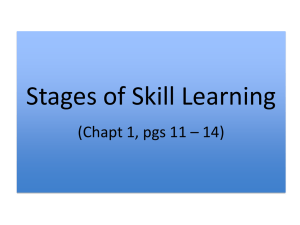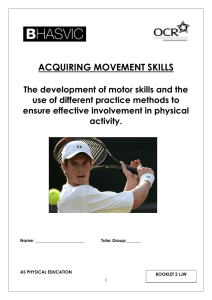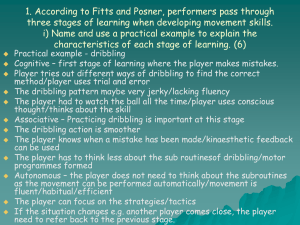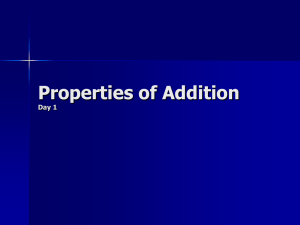Lesson 4 Phases of learning - Fitts and Posner
advertisement
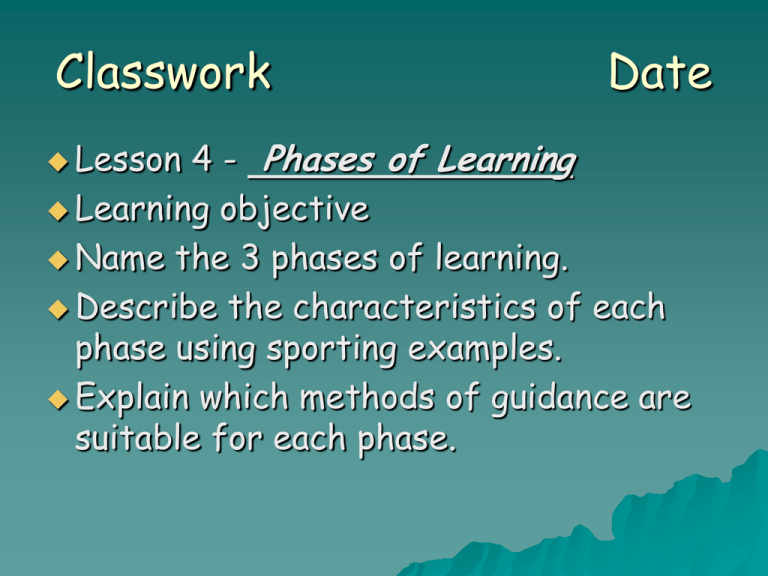
Classwork Date 4 - Phases of Learning Learning objective Name the 3 phases of learning. Describe the characteristics of each phase using sporting examples. Explain which methods of guidance are suitable for each phase. Lesson Characteristics of the phases of learning: use the table below to indentify the 3 phases of learning , the characteristics of each phase & give examples of each. Phase 1 2 3 Characteristics Practical examples Phase of motor learning People learn at different rates & in different ways & this should be taken into consideration when teaching. An experts needs are different from those of a novice. Fitts & Posner (1967) suggest that this progression from novice to expert can be modelled using IP concepts. This model can be used by teachers to analyse what stages of learning their client is at. PHASES OF LEARNING (Fitts and Posner) COGNITIVE PHASE (beginner) initial learning of basic skill understanding of the activity analysis of techniques use of models ASSOCIATIVE PHASE focus on movement comparison of action with model error detection and correction skill still inconsistent AUTONOMOUS PHASE (elite sportsman) action automatic attention can be given to environmental aspects of activity focus on tactics / strategy Cognitive (early) phase First/initial phase Learner tries to create a mental picture. Demonstrations and verbal explanations very important. Learners need to be directed to the important cues. Trial and error learning takes place. Successes need to be reinforced with positive feedback. Performances are inconsistent and full of errors. Practical example The teacher demonstrates the overhead clear to the badminton learner and describes two or three coaching points before the learner has a go at performing it. The teacher praises the learner for parts of the skill they get right. Associative (interactive) phase Second/practice phase. Usually longer than cognitive phase and some learners never leave this phase. Learners begins to eliminate mistakes. The fundamentals of the skill are learned and mastered. The skill becomes more consistent. Motor programmes are developed with subroutines becoming more co-ordinated resulting in the skill becoming smoother. The leaner is able to attend to relevant cues. The learner develops the ability to use internal /kinaesthetic feedback to detect some of their errors. Practical example The performer has a good mental picture of the overhead clear and has practised it. They are now getting the feel for the shot and it is becoming more fluent and consistent. They are aware of what is right and what is wrong with the shot without being told and attempt to correct any faults. Autonomous (final) phase Third/final phase of learning. The leaner is able to execute the skill with the minimum of conscious thought and can concentrate on other factors such as where to place the shuttle in order to beat their opponent. The motor programme is established & stored in the long term memory. Self – confidence is increased & the learner is able to detect errors & correct them. There is less need for external feedback but when it is given it can be specific & highlight errors to ensure improvement. Improvements are slow & if practise is not maintained the leaner may return to the associative phase. Practical example The overhead clear is now performed consistently and fluently with little attention paid to its execution. The leaner is now able to focus on their opponent's position on the court, the next shot and where to place the shuttle. Review What are the 3 phases of learning? Describe the characteristics of each phase using sporting examples. Which methods of guidance are suitable for each phase? Homework Past paper exam questions Further reading pages 83-86 Next lesson – Theories of learning





